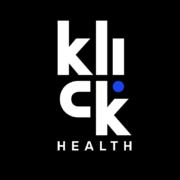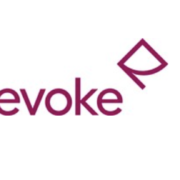Healthcare Agency Roundtable 2023: Pressing issues in the election year
Healthcare Agency Roundtable 2023: Pressing issues in the election year
By Maria Fontanazza • [email protected]
What critical topics would you like to see addressed in health care in the upcoming 2024 election year?
Josh Righter, Associate Managing Director, Amino, a division of Calcium+Company: This question feels inherently political, but much smarter people than I have cautioned against mixing business and politics. So… now what? To me, politics is another word for “solutions” (although it certainly doesn’t always feel that way). We don’t have to agree on solutions today, but let’s at least agree on the big problems. U.S. life expectancy has declined and is behind that of many other developed nations. Nearly 40 percent of Americans skipped or delayed medical care in 2022 because of treatment costs. And inequity in our healthcare system persists, with marginalized groups continuing to receive worse care at higher cost. We have made incredible progress in closing some of these gaps. Science continues to deliver miraculous treatments that change lives every day. But we must continue to hold our elected leaders to account, tirelessly, ceaselessly, until all patients receive quality, empathic, affordable care. This is our challenge. Now let’s get to work on the politics.
Angela Tenuta, President, EVERSANA INTOUCH: Election years always bring with them a healthy and powerful debate on topics in health care. It’s hard to say exactly what 2024 will bring, but my personal hope is a continued focus on addressing health inequalities will continue to be a part of many discussions. As an industry and as a nation in the United States, we need to do all we can to ensure people who need access to care can get it. We have come a long way and at EVERSANA INTOUCH, we’re very proud the work we’ve done so far. However, we have a long way to go and it’s something, I hope, that whomever the elected officials may be, we will continue to discuss ultimately putting patients first.
Todd Greene, Senior VP, Omnichannel Marketing, Brick City Greenhouse: The topic I’d like to see addressed focuses on the intersection of healthcare data and artificial intelligence (AI). AI will be a trendy topic this election year, proven by the recent October 30 Executive Order (EO). This EO included a half dozen specific mentions of health care and health data, and our industry’s unique nuances do make it extremely complex. There are ethical and legal concerns that our industry honestly may need guidance on, from the basics of communication to the more complex areas of science and disease management. Therefore, a clear understanding of what decisions and guardrails will come out of the order and what actions need to be taken could help us all plan for the coming years.
Douglas Bock, Partner, Archbow Consulting: PBM reform: U.S. Congress and key regulatory agencies (e.g., the Federal Trade Commission) are investigating the role of PBMs in distorting the market for pharmaceutical products for patients, pharmacies, plan sponsors, and manufacturers. “High drug prices” are always a concern for voters, but attention is being paid to other actors in the ecosystem who influence prices — especially those paid by patients.
Copay accumulator and maximizer programs: These programs are evolving and are sure to garner more attention in the coming year. Recently a federal court struck down a Trump administration rule that allowed accumulator programs. Meanwhile, a major civil case is proceeding against a leading maximizer company that would profoundly impact the viability of maximizer programs if the maximizer company loses the case.
Alternate funding programs: These programs, where intermediaries carve out branded products and enroll patients in manufacturer programs designed for uninsured patients, are the latest bête noire for manufacturers. In another closely watched civil case, a major manufacturer sued an AFP in federal court. If the manufacturer’s case is successful, it will relieve the industry of a significant business model threat that also creates long-term harm to patients and their employers.
Sommer Bazuro, Ph.D., Chief Medical Officer, IPG Health: Ensuring clinical trial equality for minoritized populations is a crucial public health and healthcare issue, and it’s important that this topic is addressed in the 2024 U.S. election year. To achieve this goal, several critical topics should be discussed and acted upon.
- Data collection and reporting: Mandate thorough data collection and reporting on the demographic characteristics of clinical trial participants, ensuring transparency in reporting the representation of minoritized populations.
- FDA and NIH oversight: Hold regulatory agencies like the FDA and NIH accountable for enforcing and encouraging diversity in clinical trials, possibly through legislative or executive action.
- Cultural competency and inclusivity: Encourage training and education for healthcare providers and researchers on cultural competency to ensure that trial participants are treated with respect and understanding of their unique backgrounds and needs.
- Community engagement: Establish partnerships between researchers and local communities, including community organizations and leaders, to build trust, facilitate recruitment, and ensure that clinical trials are designed with the input of those they aim to serve.
- Regulatory reforms: Review and potentially revise regulatory requirements to make them more inclusive, such as revising eligibility criteria that may disproportionately exclude certain populations.
Khari Motayne, VP, Media, CMI Media Group: Ensuring a diverse pipeline of and access to medical professionals in a post-affirmative action landscape is at the top of my mind. In an amicus brief to the Supreme Court defending affirmative action for medical schools, the AAMC believed not being able to consider diversity in admissions “would literally cost lives and diminish the quality of many others.” In the aftermath of a pandemic that ravaged the Black and Hispanic communities, reducing the number of healthcare professionals from those populations would have a chilling effect on the trajectory of health equity in the country.
Egbavwe Pela, SVP, Media, CMI Media Group: I would love to hear about the workforce shortage of doctors, and the strain on the system and lack in quality care that is provided as an outcome of the shortage of healthcare professionals.
Amy Litt, VP, Communications Planning, CMI Media Group: Elected officials need to bring forth plans to address our crisis in maternal mortality. Whether it is couched in the sanctity of life, the centrality of the family, a component of achieving health equity or simply providing health care as a human right, every aspiring leader has a reason to ensure Americans can safely give birth.
Jacob Harrison, Director, Ecommerce Investment Strategy, CMI Media Group: I would like to see the national impact of pharmacy deserts specifically in low-income communities and the interest in technology to bridge the gap. I would also be interested in the movement for price transparency and regulatory changes coming with PBMs across retail pharmacies big and small.
Jenny Baban, Senior VP, Customer Experience Management, CMI Media Group: Mental health support is a critical issue I’d like to see addressed in upcoming elections. The cost, accessibility, and stigma around mental health care continues to be an immense challenge in our nation, affecting millions of individuals, as well as impacting families, communities, and the economy.
Steve Bernstein, Partner, CrowdPharm: I would like to see a national prescription database for controlled substances to help reduce abuse and diversion.
Barbara LePetri, M.D. Chief Medical Officer, The Bloc: In short – meaningful and quick solutions to combat the shortage of doctors and other health care professionals. I was struck by comments two friends, who are also HCPs made recently about how long they had to wait, in their own institution, for care. If HCPs who know how to advocate for themselves can’t get access to timely care in the institution they work at, what hope does the average American have. Let’s consider all the tasks our physicians and their staff do that compete with direct patient care. The office handles queries about vaccinations, calls to remind patients of appointments or cancer screening patients are due to complete, refill chronic medications, fax forms to other HCPs or insurance companies, etc. You get the picture. We should be able to leverage AI to take on some of these low complexity tasks. I can envision using AI to help primary care doctors screen for ways in which mental health issues could impact treatment and recovery of physical ailments, or to help them stratify patient by risk and helping the practice to prioritize higher risk visits. It’s crucial that the objective of any such effort be to better deploy physicians for tasks they were uniquely trained to do – and not to get more out of each doctor or each practice. And perhaps as important, not pass the buck to the office staff who is similarly overwhelmed. We have smart phones and smart computers – let’s pass some of this low complexity work to them.
Nichole Davies, Chief Strategy Officer VMLY&R Health: Despite U.S. spending being over twice the average (per capita) on health than any of the other wealthy countries, it performs worse in many universal health metrics for outcomes. It has the lowest life expectancy at birth, the highest death rates for avoidable or treatable conditions, the highest suicide rates, the highest rate of people with multiple chronic conditions, and an obesity rate nearly twice the OECD [Organisation for Economic Co-operation and Development] average. When we look at women’s health, the statistics are even worse. What’s more, the situation is deteriorating over time, with life expectancy for women declining when compared to men in the U.S., women in other high-income countries, and previous generations of American women. The chronic disease burden for U.S. women is 2.85 times higher than the lowest burden across other wealthy countries at (which stands at 20 percent). The U.S. has the highest maternal and infant mortality with Black mothers being disproportionately affected – this has been on the rise for years with more alarming increases in recent times.
Despite the uptick in the overall insured population, access to healthcare is a growing problem that particularly affects women. More than a third of U.S. women skip health care because of cost. A significant proportion are covered with insurance as a dependent and are therefore at greater risk of losing coverage due to being divorced or widowed or a job loss. The risk increases for low-income women, driving further inequity. Additionally, funding for family planning services and reproductive healthcare are often riddled with bureaucracy, creating more disparities. We must address this in the upcoming elections and do more to make health care accessible to all women. It is 2024 after all.
How are you helping clients navigate the business challenges introduced by the Inflation Reduction Act (IRA)?
Cameron Izadi, Senior VP, Fingerpaint Market Access: The IRA has reinforced the importance of embedding a U.S. market access perspective into the development, launch, and growth strategies of pharmaceuticals more than ever before. While the IRA is expected to have a profound impact on the industry, its influence on each product will vary based upon its exposure to the provisions of the law. Over the past year, our team has been working closely with clients to evaluate this exposure across their portfolios, develop commercial strategies, and establish standardized processes that ensure U.S. market access assumptions are consistently integrated. This requires not only an appreciation of the IRA itself, but also purposeful collaboration between marketing, U.S. market access, and medical functions beginning as early as phase 2 of the development program.
Ellen Cappellino, Executive Director, Value, Access, and Reimbursement, Klick Health: The IRA has the potential to transform the pharmaceutical industry as it impacts patients, payers, and manufacturers alike. For patients, the goal is to reduce out-of-pocket prescription drug costs, while maintaining access. With a $2,000 cap on out-of-pocket costs, patients should be able to start and stay on treatment more easily, improving outcomes. However, for payers, this cap means that certain sectors (e.g., neurology products) may see reduced patient costs, while oncology and orphan drug sectors could see increased plan costs. Ultimately, this could all lead to payers implementing additional utilization management and restrictions as a result. This legislation could also impact biopharmaceutical clients, and at Klick we support our clients across a range of therapeutic areas in several ways. We monitor the evolving landscape, patient costs, payer management, and overall impact; we consider IRA implications when planning lifecycle management strategies and payer value propositions; we build patient affordability programs to help with out-of-pocket costs and define real-world evidence needs; and we conduct scenario planning for potential IRA impact on our clients’ businesses and strategic imperatives.
Fred Kinch, Founder, Brick City Greenhouse: Several of our clients took unusual cost-cutting moves in late 2022 and going into 2023, such as limiting travel and scaling back initiatives and workstreams that would have been standard operating procedure in past years. We also noticed a drop in new business activity. Moving a brand from one agency to another can waste time and resources and, across the pharma industry in general, we saw a reduction in pitches and a push toward trying out new agencies via smaller projects. On our end, we’ve always put an emphasis on being sensitive to our clients’ internal financial pressures by scaling initiatives and finding creative ways to stretch resources. And on the new business front, we’d always prefer to have our potential clients try us out via a project rather than relying on an overly scripted agency presentation. Doing so, they get a better sense of what it’s actually like to work with us and come away from the process with a deliverable that’s actually useful to the brand.
Sarah Alwardt, US President, Policy, Access, Value, Evidence, Avalere Health: The IRA continues to make a substantial impact in the pharmaceutical space. While the IRA took important steps to lower out-of-pocket costs for patients in Medicare Part D — including setting an annual cap on spending — its consequences may reverberate in different ways. Now that the federal government has identified the first 10 drugs for negotiation, there may be significant changes in patient access — not only for the negotiated drugs but for their competitors as well. In year three, when physician-administered drugs are included, lower prices for negotiated drugs could change the economics of provider infusion, potentially resulting in site-of-care shifts. What will this mean for patient outcomes? Additionally, knowing that certain drug pricing may be negotiated down, manufacturers have a condensed timeframe to recoup their investments, requiring a different perspective on portfolio management and indication sequencing.
Navigating the consequences of the IRA will involve understanding the complexities of the legislation, mitigating risks, preparing for upcoming changes, and identifying opportunities to influence the law’s implementation. Leveraging large databases of claims data can help clients model the likely impacts of the IRA drug-pricing reforms on pipeline and portfolio products and anticipate the approach of the Centers for Medicare & Medicaid Services to evaluating evidence packages during the price-negotiation process. These data can help inform the development of strategies to strengthen those evidence packages and ensure that negotiated maximum fair prices accurately reflect product value.
Dina Steinfurth, Managing Partner, Valuate Health Consultancy: The Inflation Reduction Act contains measures designed to increase access to health care and reduce financial burdens for seniors and low-income beneficiaries. These measures likely will affect pharmaceutical manufacturers two ways. First, Medicare price negotiation will affect drug formularies and decrease net cost to plans. There is still uncertainty over the IRA’s formula for determining which drugs will qualify for price negotiation, as the list of the first 10 drugs included some surprises. As subsequent deadlines draw closer, manufacturers need to align closely with their legal departments to better understand the qualifying requirements. For indications with a high proportion of Medicare patients and where there has been limited rebating in the past, we expect substantial impact to forecast which may lead to reprioritization of manufacturer portfolios to maximize long-term value. Second, fiduciary responsibility will shift from the federal government to manufacturers and plans as the combination of patients shifting between segments, inflation rebates, and Medicare Part D redesign play out. Manufacturers can also expect increased gross to net responsibility in 2024 and beyond driven by an increase in Medicaid as a percentage of patients, inflation penalties, and Part D benefit re-designs.
Carolyn Atchison Senior VP, Value Builders Consulting: We do anticipate adjustments in both payer (i.e., health plans, IDNs, PBMs, etc.) and drug manufacturer strategies in response to the IRA in areas such as drug pricing, contracting, plan management, and evidence generation. Due to greater financial liability for payers, particularly due to the Part D plan redesign, it is predicted that some payers will want to see lower drug list prices and net costs, and greater rebates from manufacturers. For drug manufacturers, maintaining their profitability and meeting some PBM-required rebates will need to be considered. It will also be interesting to see if some payers, where possible, maintain more narrow formularies, increase utilization management controls, enhance their efforts on population health management, and potentially reduce the number of offered Medicare plans (and/or additional benefits) and/or adjust those premiums to help manage their new financial limitations within Medicare. There may also be additional downstream impact on the commercial side to help compensate for potential lost revenue on the Medicare side of the business.
For drug manufacturers, even greater scrutiny on launch drug price research may be warranted as the magnitude of future price increases will become limited. Additionally, drug manufacturers will need to justify potentially higher launch prices with even stronger product value demonstration and differentiation via thoughtful evidence generation planning. Due to the Part D plan redesign, drug manufacturers may benefit from their reduced financial liability within the initial coverage threshold but will need to be prepared for their increased financial responsibility if/when patients enter catastrophic coverage. It remains to be seen how many drugs in both Part D and B will be selected for, and undergo formal pricing negotiations over time, especially given the number of current lawsuits by drug manufacturers.’
Raymond Johnson, Senior VP, Market Access Strategy, Ogilvy Health: Our key emphasis for helping clients navigate potential business impacts of the IRA is to empower their customer-facing teams to have an effective dialogue on this evolving topic. Initial provisions of the IRA started to take place in 2022–2023 (e.g., insulin pricing, vaccine coverage, selection of the first 10 drugs for price negotiations). However, these are only the first steps toward the U.S. government in the form of Centers for Medicare & Medicaid Services (CMS) directly negotiating with manufacturers to determine reimbursement for selected, high-spend drugs covered under Medicare Part D. There will be increased scrutiny on Medicare spending in general, as traditional fee for service Medicare continues to decline in enrollment and Medicare Advantage plans offered by private insurers increase their enrollment to over 50 percent of the eligible population.1 2024 will be a year to stay in tune with the latest policy developments leading up to major Medicare Part D benefit redesign changes in 2025, with pricing determinations slated to go into effect in 2026. We will be tracking how the IRA influences manufacturer drug pricing, cost shifting by plans (potentially resulting in higher Part D premiums to offset increased costs, and potentially more restrictive Part D formularies, among other areas. It will be essential for both manufacturers and their customers to understand the key drivers of the IRA’s impact. As out-of-pocket maximum spend will be capped, might it even be possible that the price for a branded drug could be less expensive than a generic alternative. It will be important to communicate these key points to customers and patients to mitigate surprises along the post-Rx access journey.
Nancy Codoner, Director of Market Access, McCann Health Managed Markets, an IPG Health Company: CMS recently identified the top 10 drugs for negotiating a maximum fair price, as part of the IRA. The drug list is driving short-term business challenges for select manufacturers. A tricky component of the legislation requires CMS to consider evidence on alternative treatments to a selected drug, precipitating comparisons to the drug itself. From a market access perspective, manufacturers traditionally strive to communicate the value of a product to ensure coverage through health plans. However, it is not clear how CMS will determine or define “value” in the Drug Price Negotiation Program. Pharmaceutical manufacturers are working quickly to collect data (i.e., clinical, outcomes, health economic, and real-world evidence) to support these negotiations. While data is critical to effective negotiations with CMS, the data must be meaningful and reinforce the product’s value.
Healthcare Agency Roundtable 2023: Representation in healthcare marketing (Part II)
Healthcare Agency Roundtable 2023: Artificial intelligence for the foreseeable future (Part III)
Healthcare Agency Roundtable 2023: Cutting through the social noise (Part IV)
Healthcare Agency Roundtable 2023: A look ahead in market access (Part V)
Healthcare Agency Roundtable 2023: Moving into 2024 (Part VI)
| Maria Fontanazza is the director of content, Med Ad News and PharmaLive.com. |




























